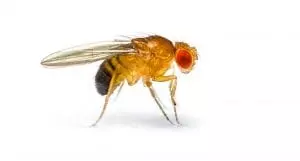[Originally published as Maintenance of Deleterious Alleles]
Deleterious alleles are, by definition, not beneficial and should be selected out. However, sometimes deleterious alleles are maintained in a population despite their harmful effects. Scientists have proposed several explanations for this unintuitive quirk of biology. Overdominance, otherwise known as heterozygote advantage, and mutation-selection balance are two such explanations.
Two Sets of Mutations are Better Than One
Overdominance is a genetic phenomenon where having two copies of a particular allele is worse than being a heterozygote. In some cases, the homozygote is lethal (Semenkovich et al, 1995), while in others, the heterozygote is merely more fit than the homozygotes (Kekalainen et al, 2009). Selection will thus act on the population to favor the heterozygotes. Overdominance has also been associated with inbreeding depression (Roff, 2002, Charlesworth and Charlesworth, 1990) so the heterozygote needs to have a fairly strong fitness advantage to be maintained against both inbreeding depression and selection.
One example of overdominance where the homozygote is not lethal comes from the sheep’s reproductive system. A particular set of mutations increases the rate of reproduction for female sheep when combined with the wild-type allele (Gemmell and Slate, 2006). However, when only copies of the mutant allele are present, are often infertile and suffer from deformed reproductive organs. The researchers suggested that the heterozygote advantage could be maintained in multiple environmental conditions.
While the wild-type allele was slightly deleterious compared to the mutant allele, it was not eliminated from the sheep under study. The lack of elimination may be partially due to a lack of time for it to be selected out of the population. However, because when paired with the mutant allele, it provides a fitness advantage, it seems more likely that the deleterious wild-type allele is maintained due to heterozygote advantage. This evidence is augmented by the allele being X-linked and thus explicitly tied to a potential reproductive advantage. Thus overdominance contributes to the maintenance of deleterious alleles that would otherwise be removed from the population through natural selection.
The second method by which deleterious alleles can be preserved in a population is that of mutation-selection balance. Mutations are the mechanism that evolutionary theory relies upon to introduce new alleles into the population in question. However, most mutations are deleterious and must be removed by selection. Mutation-selection balance postulates that deleterious mutations are introduced into the population at the same rate at which natural selection removes them. Thus if an allele affected by mutations-selection balance is introduced once every one hundred generations, it also takes selection one hundred generations to remove a deleterious mutation.
In theory, if mutations are at equilibrium with natural selection, genetic variability should be stable at the particular locus under study. This idea has led numerous scientists to propose theories for how mutation-selection balance maintains genetic variation (Burger et al, 1989, Zhang et al, 2002). Because most mutations are deleterious, natural selection will remove most of the newly introduced mutants, keeping the genetic variability the same.

Sharp and Agrawal (2018) looked at three alleles present in Drosophila melanogaster. Of the three, they were able to correlate an allele that was tied to larval viability to the mutation-selection balance hypothesis. They did this by measuring the mutational decline over fifty-two generations of lab-bred fruit flies, then compared the genetic variability of the lines at the start and finish of the experiment for the traits under study.
While Sharp and Agrawal (2018) found no correlation for two of the three traits, there was a weak correlation between larval viability and the predicted results of the mutation-balance hypothesis. The mutation-balance hypothesis predicted more variability than was observed, but the loss may have come from other factors, such as genetic drift, that were not accounted for in the experimental design.
Conclusion
While deleterious alleles are under strong purifying selection, they can escape this selection in several ways. Overdominance allows deleterious alleles to be maintained by essentially hiding them from natural selection in a heterozygote more fit than either of the homozygotes. Mutation-selection balance allows deleterious alleles to persist simply by adding more of them at the same rate at which selection gets rid of them.
Overdominance maintains a specific deleterious allele, while mutation-selection balance maintains the sheer number of deleterious alleles. Both methods are important in ensuring that at least some deleterious alleles are maintained in a population.
However, neither of these mechanisms negates genetic entropy. Both retain deleterious mutations. Eventually, they will build up those mutations to a point where the population implodes as both parents pass on deleterious alleles fifty percent of the time and cause a mutational meltdown in a population. While these mechanisms might provide a relative fitness gain, they represent a loss of absolute fitness. As such, they do nothing to advance evolutionary dogma.
References:
Burger R, Wagner GP, Stettinger F. 1989. How much heritable variation can be maintained in finite populations by mutation-selection balance?. Evolution. 43(8):1748-1766.
Charlesworth D, Charlesworth B. 1990. Inbreeding depression with heterozygote advantage and its effect on selection for modifiers changing the outcrossing rate. Evolution. 44(4):870-888.
Gemmell NJ, Slate, J. 2006. Heterozygote advantage for fecundity. PLoS One.
Kekalainen J, Vallunen JA, Primmer CR, Rattya J, Taskinen J. 2009. Signals of major histocompatibility complex overdominance in a wild salmonid population. Proc Biol Sci. 276(1670):3133-3140.
Roff D. 2002. Inbreeding depression: tests of the overdominance and partial dominance hypotheses. Evolution. 56(4):768-775.
Semenkovich CF, Coleman T, Seip RL, Gimble JM, Lee D, Maeda N. 1995. COOH-terminal disruption of lipoprotein lipase in mice is lethal in homozygotes, but heterozygotes have elevated triglycerides and impaired enzyme activity. J Biol Chem. 270(21):12518-12525.
Sharp NP, Agrawal AF. 2018. An experimental test of the mutation-selection balance model for the maintenance of genetic variance in fitness components. Proc Biol Sci. 285(1890).
Zhang XS, Wang J, Hill WG. 2002. Pleiotropic model of maintenance of quantitative genetic variation at mutation-selection balance. Genetics. 161(1):419-433.







